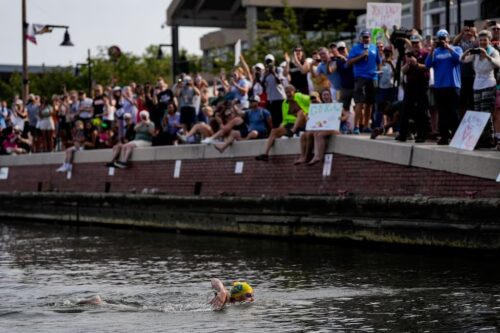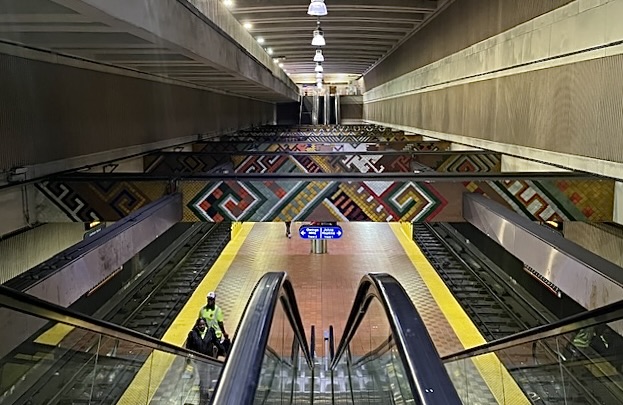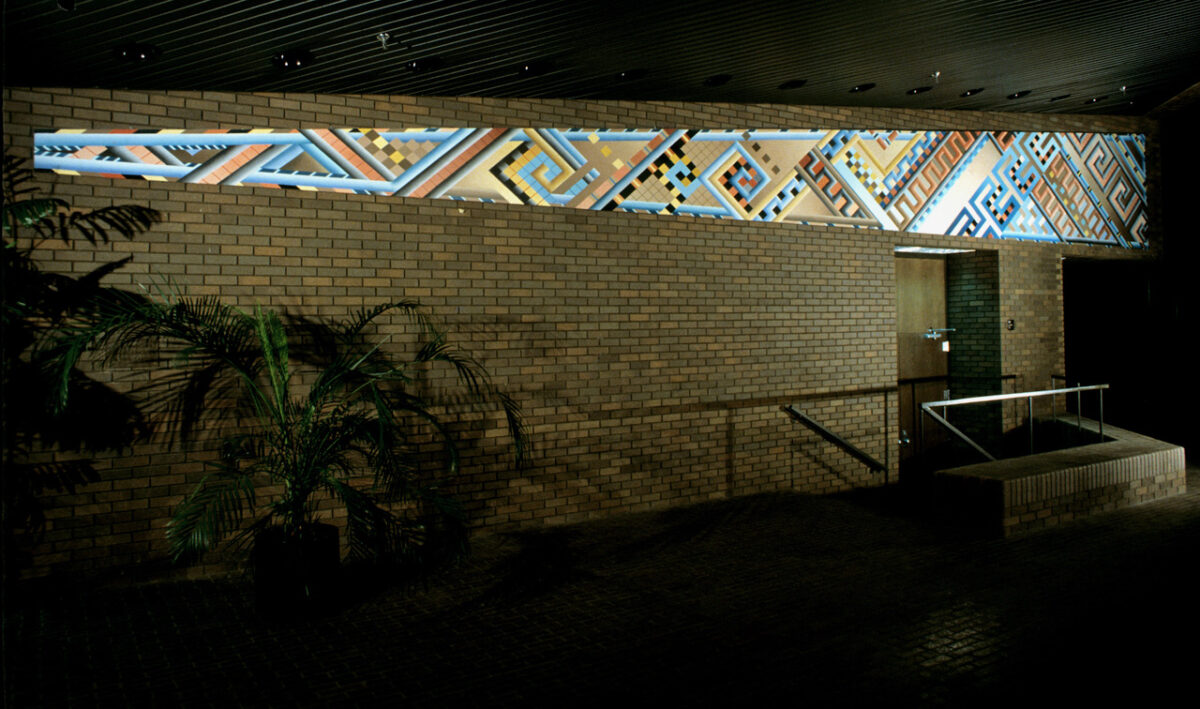Look straight ahead. Look down. Look up. Of these three options for viewing artwork, the first is most often in play, especially when the work appears where we most expect it—museums and galleries, but also hotels, restaurants, offices, or our own homes, where it’s typically mounted on walls, attracting our forward-facing gaze. Of course, there are plenty of examples of art around the globe and across millennia that appear on the ground/floor or on ceilings/rooftops.
A local, contemporary example of the former is Graham Project’s numerous pavement murals throughout Baltimore. An example more distant in place and time (Spain, some 15,000 years ago) is the 500-foot-long depiction of bison, horses, and other animals engraved and painted on the ceiling of the Cave of Altamira.
This is not to say that in any one of these three models of directional observation, the viewer’s sight line doesn’t move for one reason or another—desire, apprehension, being prompted to look elsewhere. When I inch forward toward a wall in a museum to get as close a look as possible at a painter’s tantalizingly clumpy brushstroke, I’m repeatedly glancing down at the proximity-alert tape (you know, that pesky line on the floor, linked to a sensor that’ll trigger an annoyingly loud screech if any one of your body parts crosses it, and no matter how fast you try to look innocent, you appear guilty as hell?).
When interacting with a public artwork on the pavement, I’m looking down to check out its various elements, but also intermittently looking up to make sure I don’t bump into someone or get in the way of a skateboarder. When, in 1879, amateur archaeologist Marcelino Sanz de Sautuola first stepped into the Cave of Altamira, Spain, he was so in awe of the images on the walls straight ahead of him, it wasn’t until his 8-year-old daughter María (so the story goes) tugged at his jacket and pointed to the ceiling that he thought to look up at what would remain for more than a century as the oldest ceiling cave painting known to humankind.
(Quick note: The latter is not the oldest, which is the more recently discovered 35,400-year-old ceiling painting of a babirusa, or deer-pig, in a cave on the island of Sulawesi in Indonesia. And there are even older cave paintings on walls found in other parts of Spain and Indonesia, as well as in Russia).
So, while it’s not unusual to take in an artwork by looking in a single, primary direction (straight ahead, down, up), and it’s not unusual for a variety of reasons to look in directions peripheral to the primary, what is unusual is to come upon an artwork offering all three directional viewing experiences at once—or at least within a very short time span. But that’s exactly what Baltimore artist Pat Alexander’s “Geometro,” 1983, provides users of public transportation at the Lexington Market Metro SubwayLink stop.













